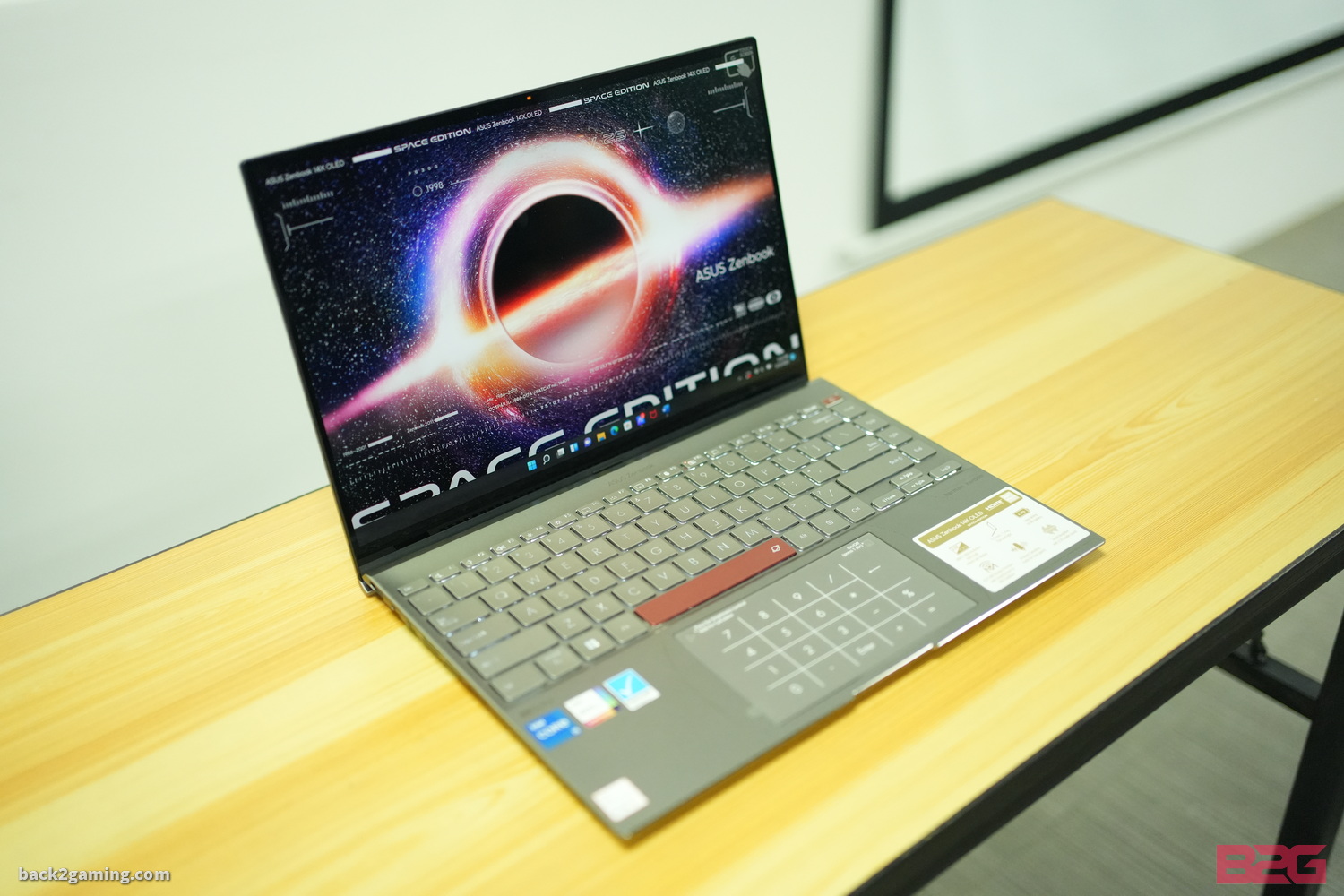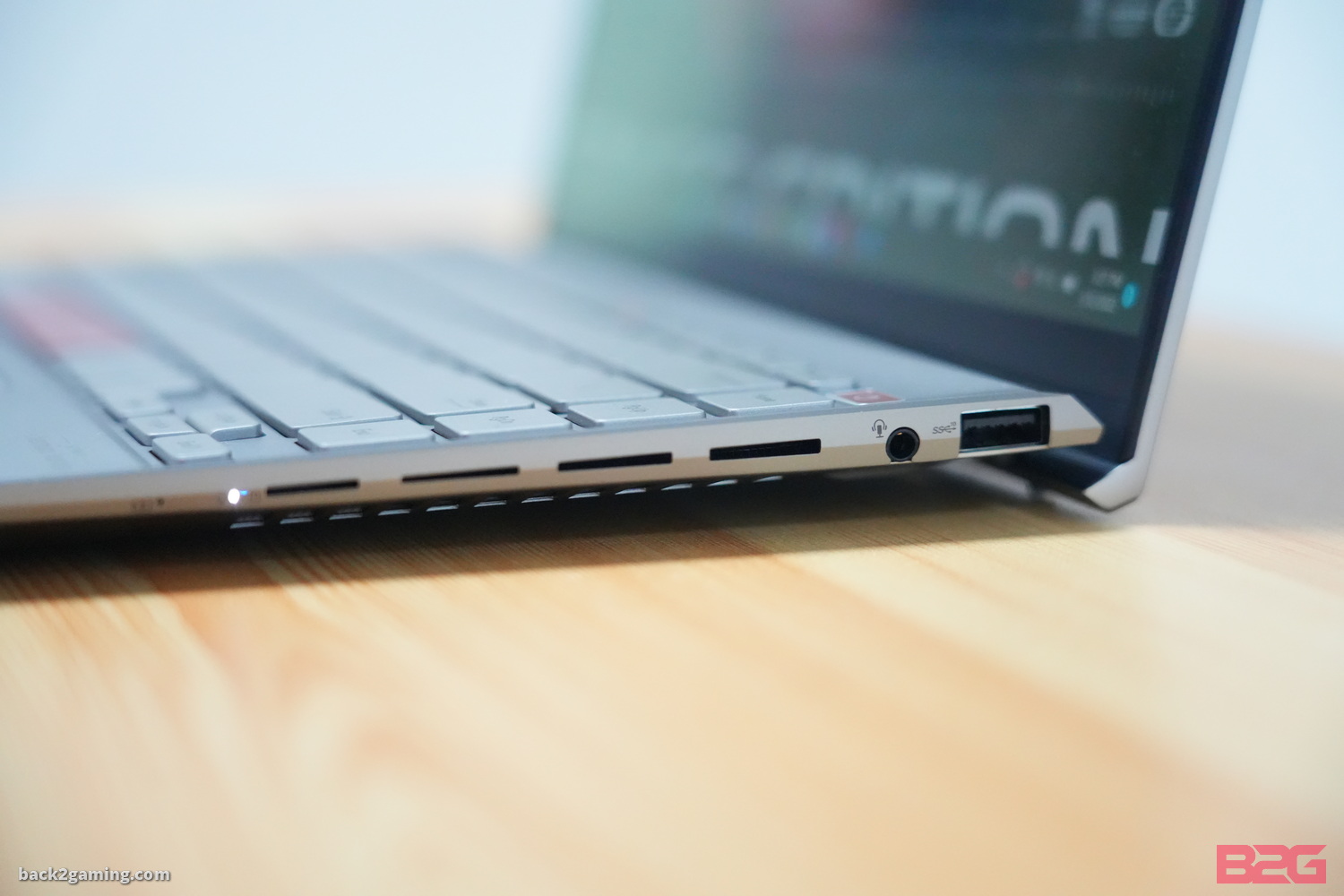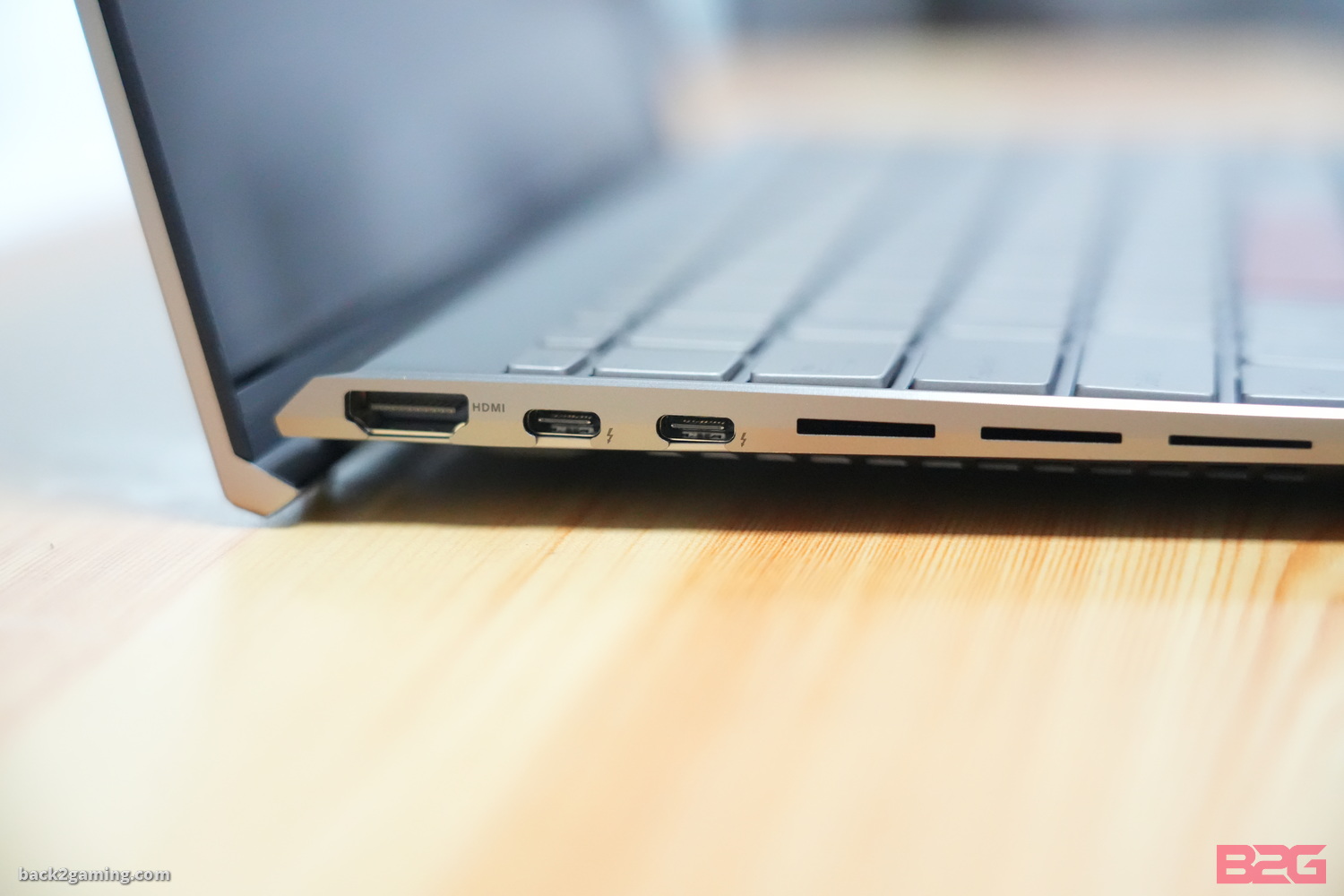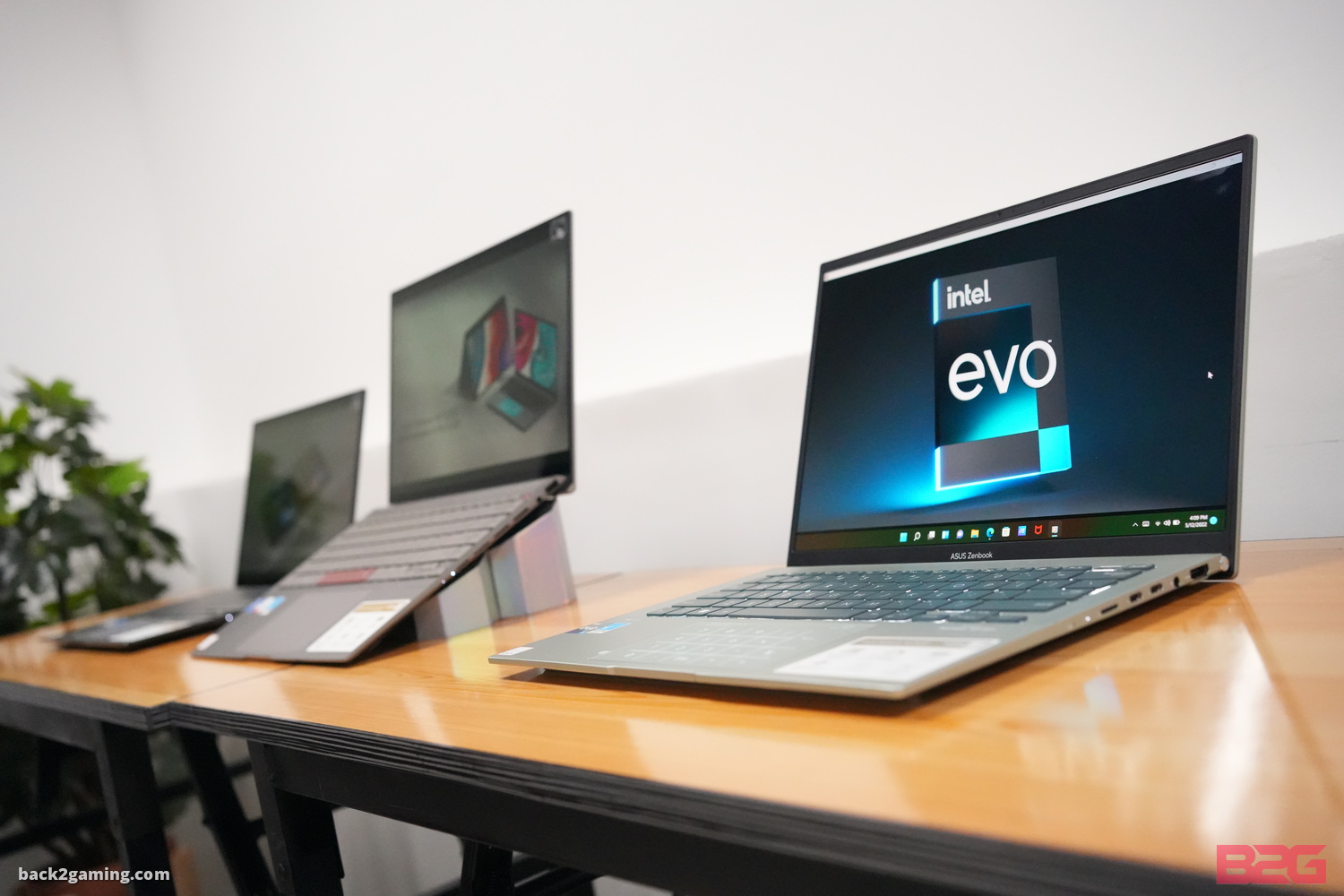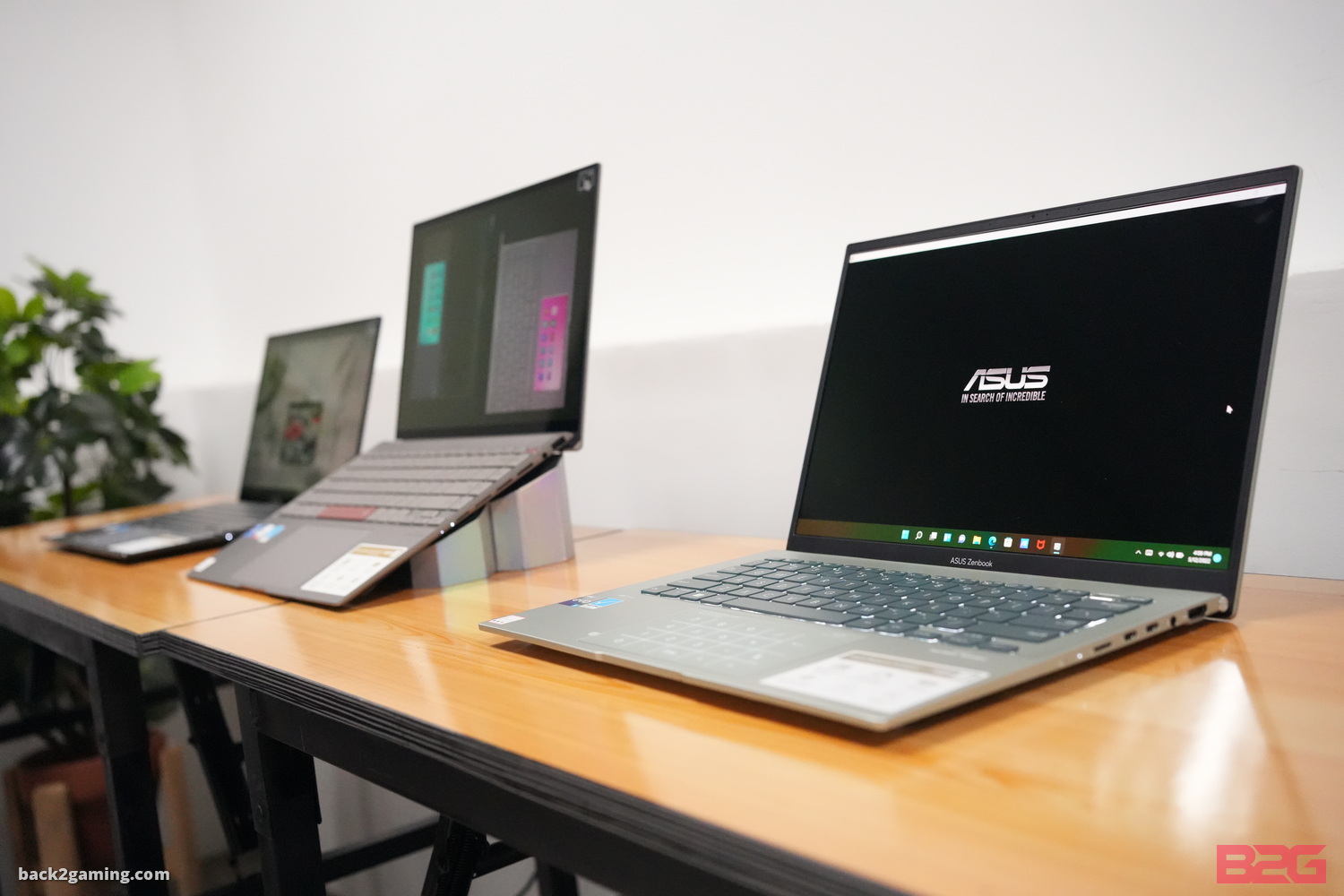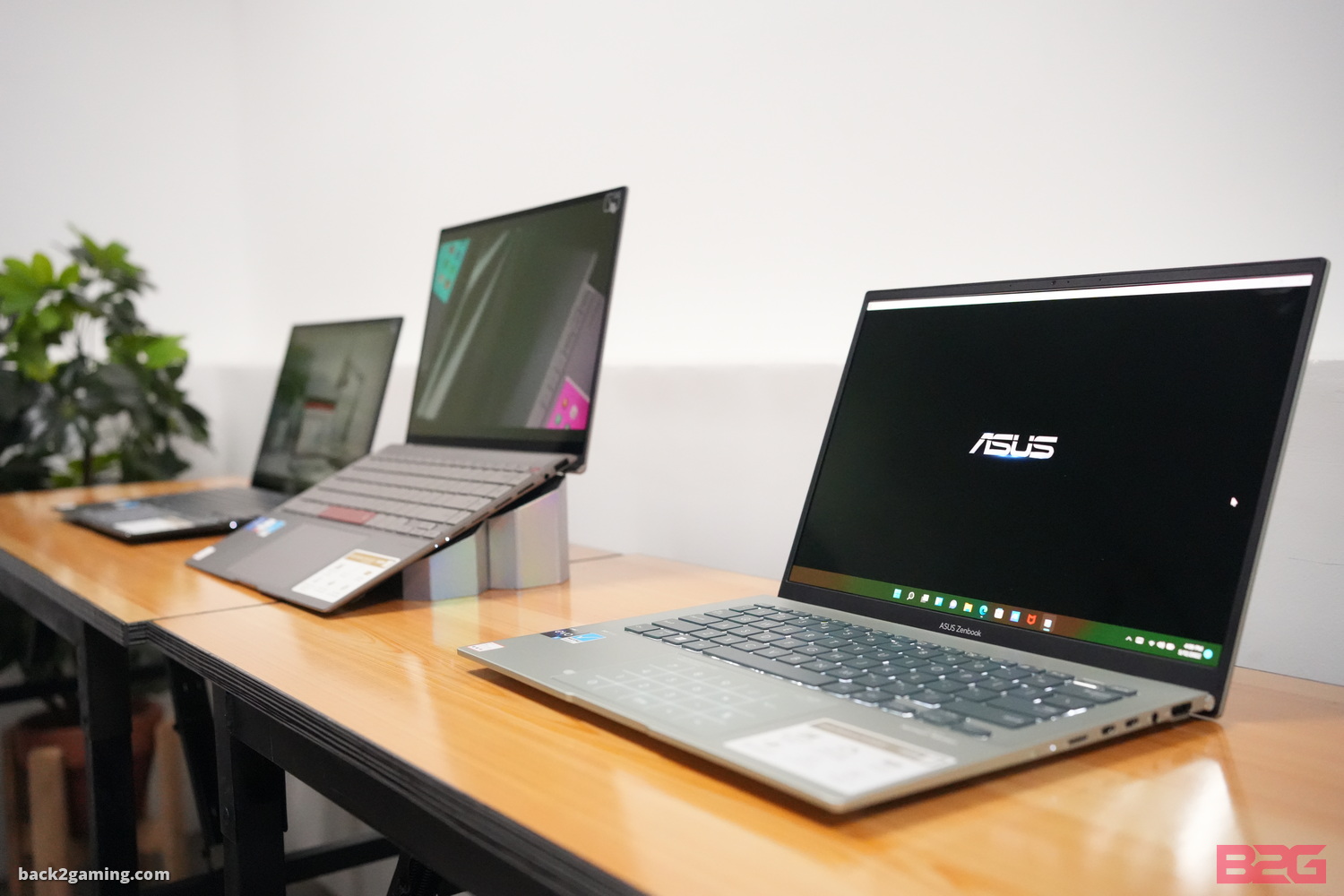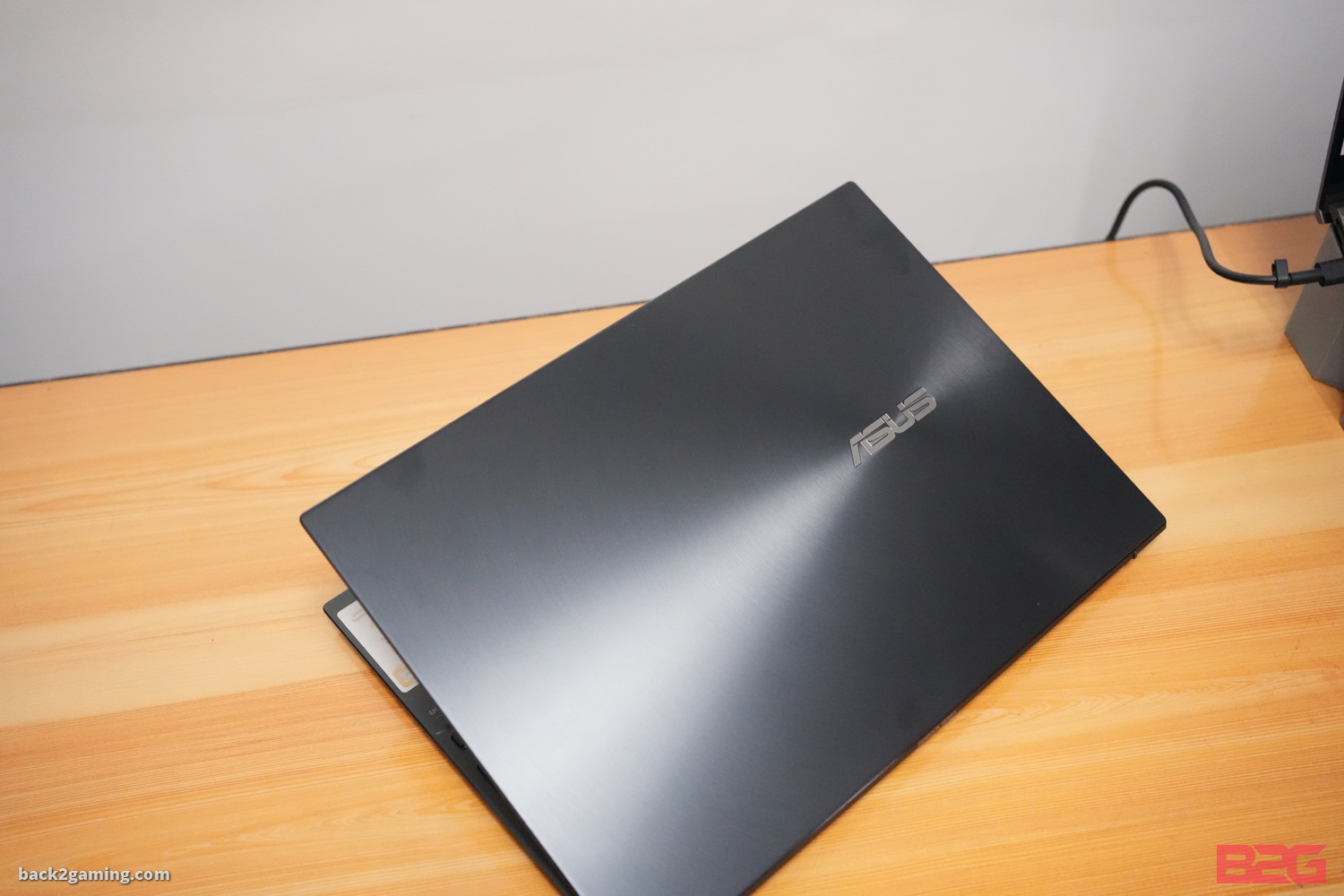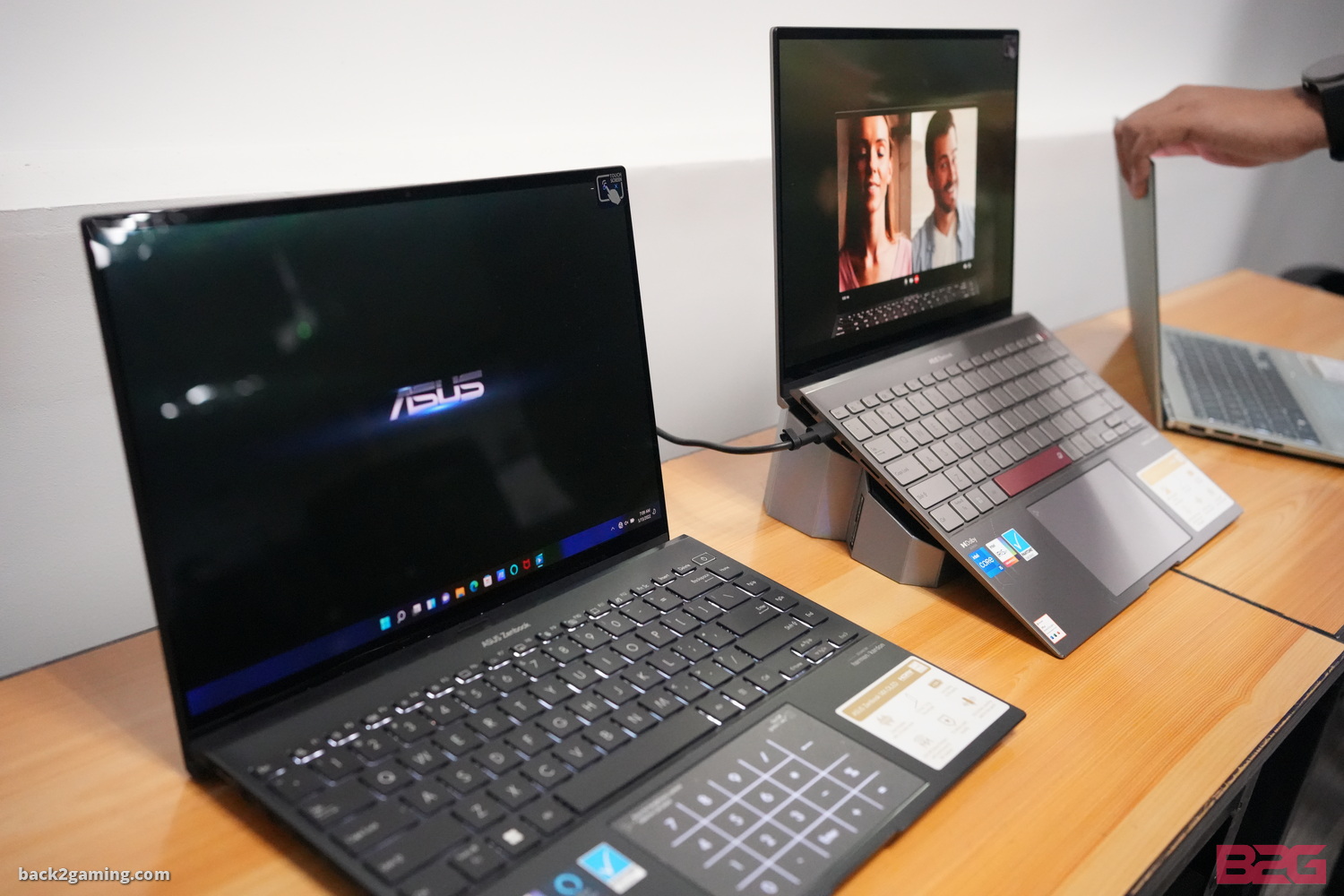Reviews of the ASUS Zenbook 14X OLED Space Edition are already out but we’re still waiting for ASUS to ship us our test unit for that classic B2G performance testing. For now I’ll share with you our short hands-on with the ZenBook 14X OLED Space Edition and share with you an initial impression of the new laptop, focusing primarily on form and usability.

A Story Made in Space: P6300 Tribute
Much of what makes the Space Edition special is its backstory and ASUS takes full advantage into making this narrative as subtle in this laptop as possible. ZenBook 14X OLED Space Edition marks the 25th anniversary of the first ASUS laptop to go to space. Let me make that very clear: the first *ASUS* laptop to go to space not the *first ever* laptop.
With that distinction said, the exact model of the original ASUS laptop that came onto the MIR space station back in 1997 was the ASUS P6300. ASUS was still in its infancy during those times but cosmonaut Viktor Afanasiyev remarked that his workstation performed without fail for the 600+ days of that mission.
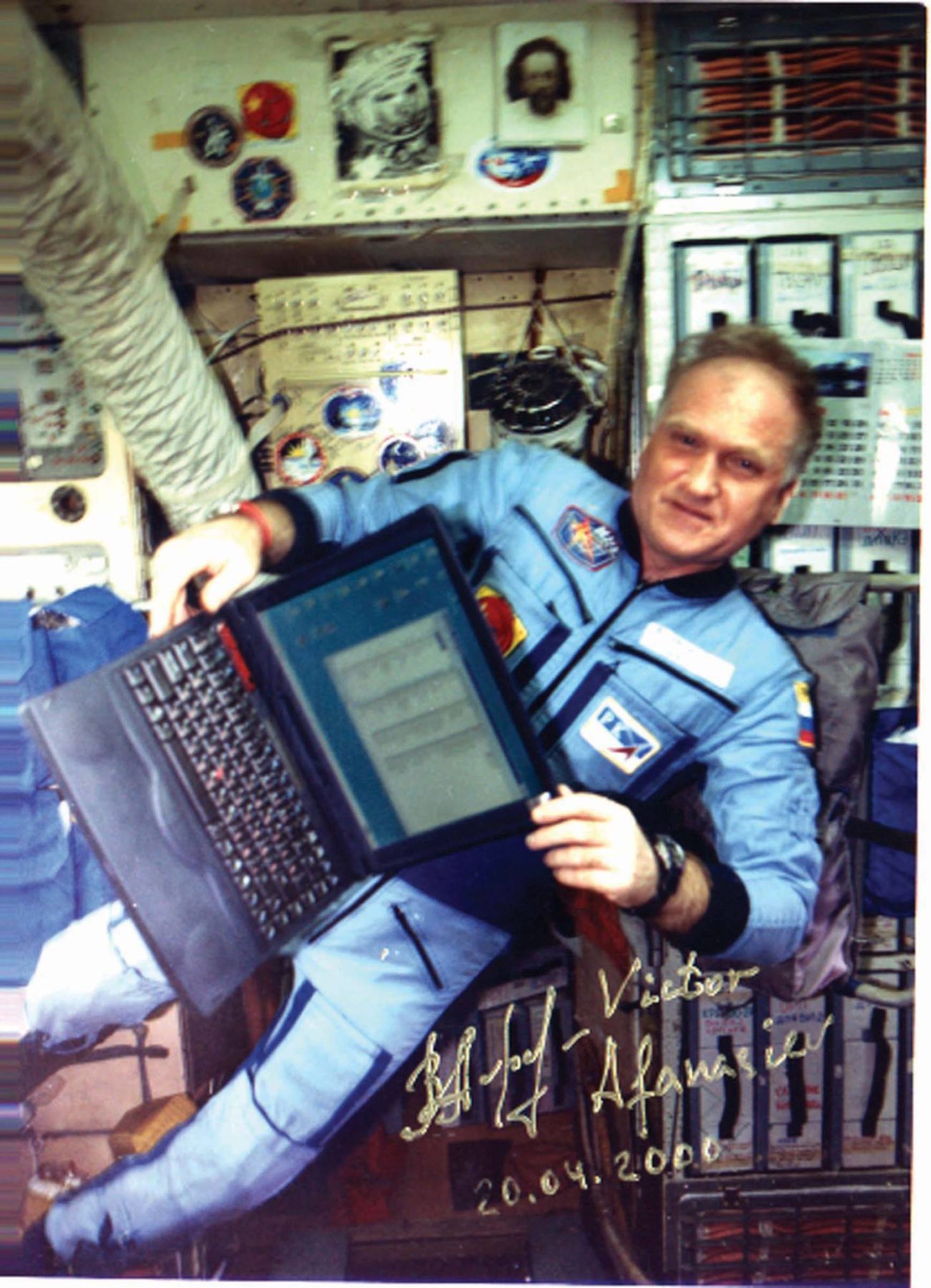
ASUS seems to take pride in this moment and that has led us to this special release of the Zenbook 14X OLED Space Edition. The Zenbook 14X OLED Space Edition shares its specs with the standard Zenbook 14X OLED but is not just a reskin of its sibling. 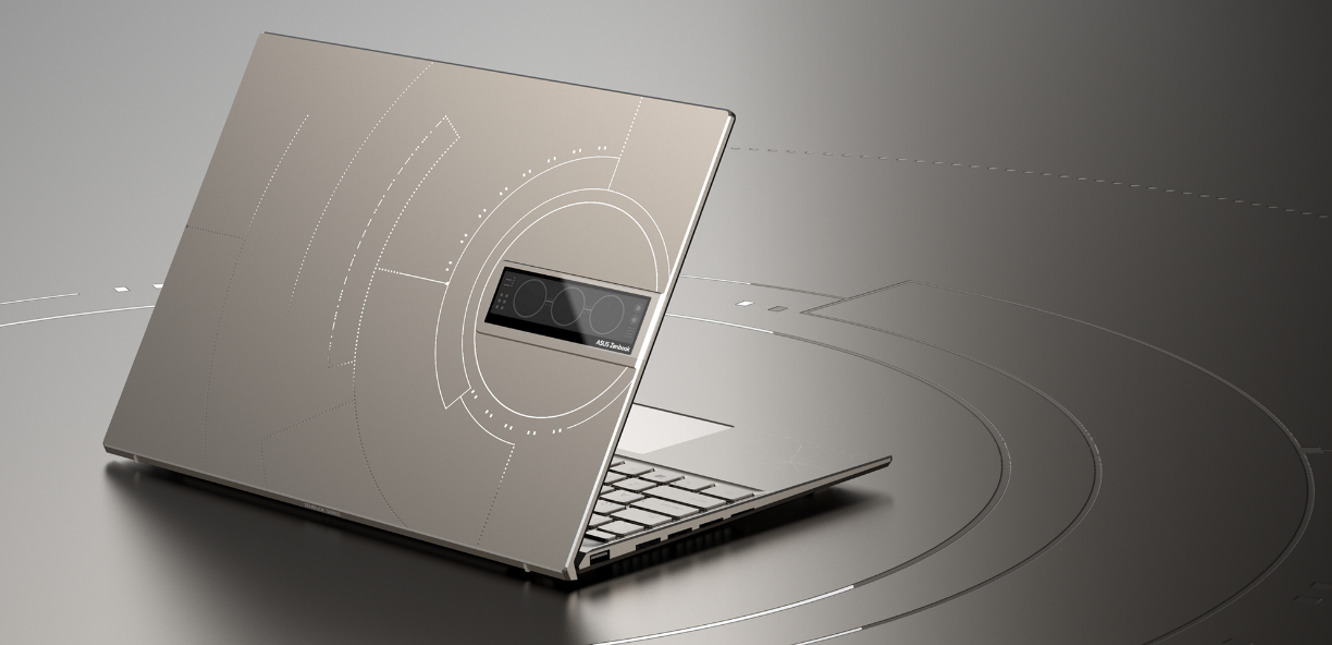
The most obvious distinction is the custom titanium-color finish of the Zenbook 14X OLED Space Edition together with visual cues that callback to its nod of the space mission as well as a 3.5″ OLED display called ZenVision.

The OLED display can be configured to display animations, a business card or text messages which can all be personalized. OLED displays and matrix animation has been a strong point for recent ASUS products and many ROG products have reveled in the extra flare this adds to their products while OLED displays have served ASUS motherboards for nearly half-a-decade now but has only made its way to a laptop release with the Zenbook 14X OLED Space Edition.
In the image above you can see the card display option features a little QR code. Unfortunately this is unreadable for the phones we’ve tested and does appear blurry due to the pixel density. This can be fixed by a firmware update but is worth noting for future buyers.
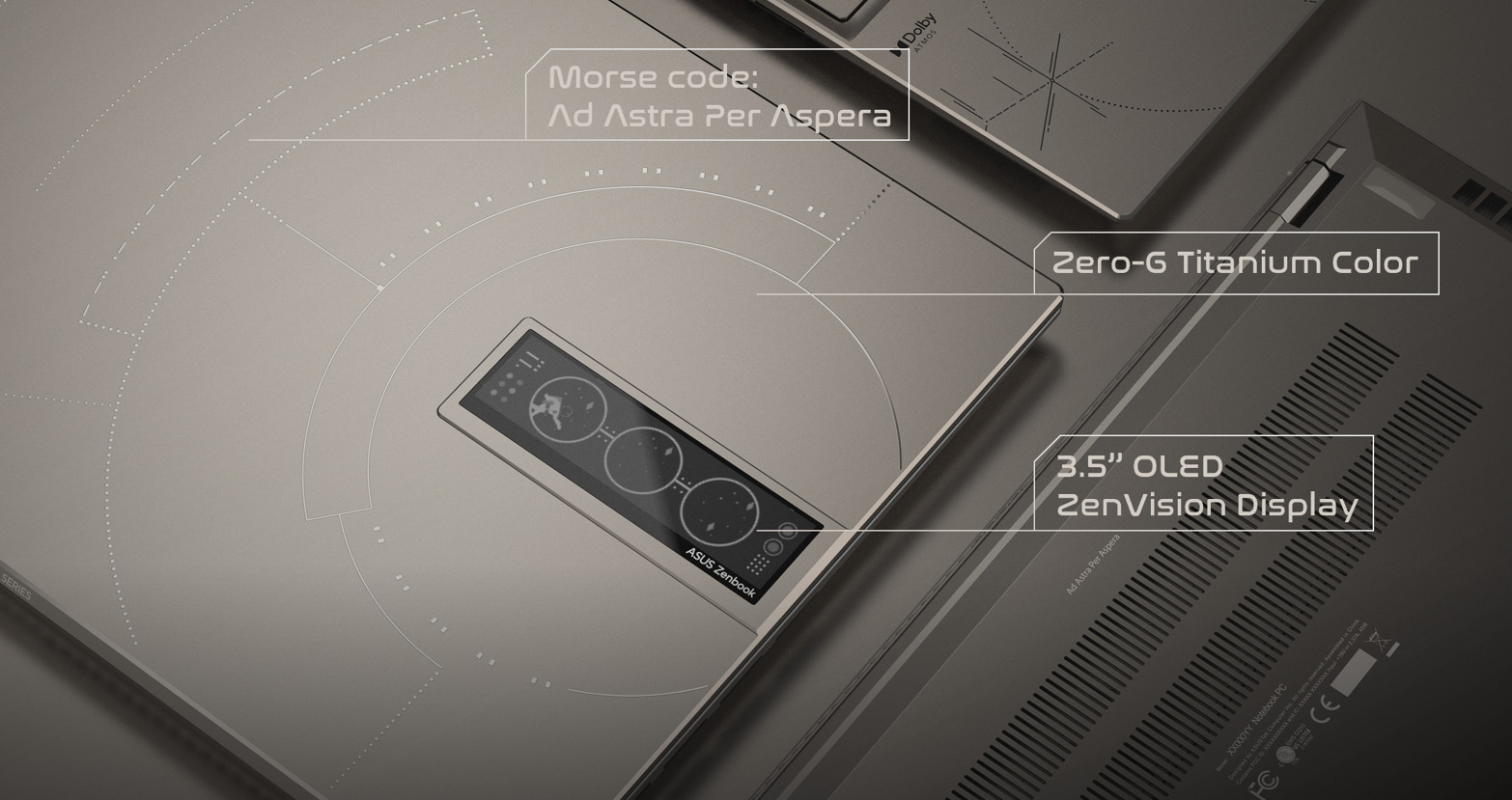
All across the body of the Zenbook 14X OLED Space Edition you’ll see these lines and dots. Select areas of the laptop actually features morse code with the cover featuring the morse code that says Ad Astra Per Aspera translates to “through hardships to the stars.”

Underneath the lid, the wrist area has a couple more Morse codes indicating a couple of key terms to its history such as MIR, the year in space of the P6300, etc.
Features
In terms of history and product storytelling, that’s pretty much what ASUS has included in the Zenbook 14X OLED Space Edition but now we come to the modern additions of the Zenbook but before we dive into the functionality and features, let’s take a look at the kit content.
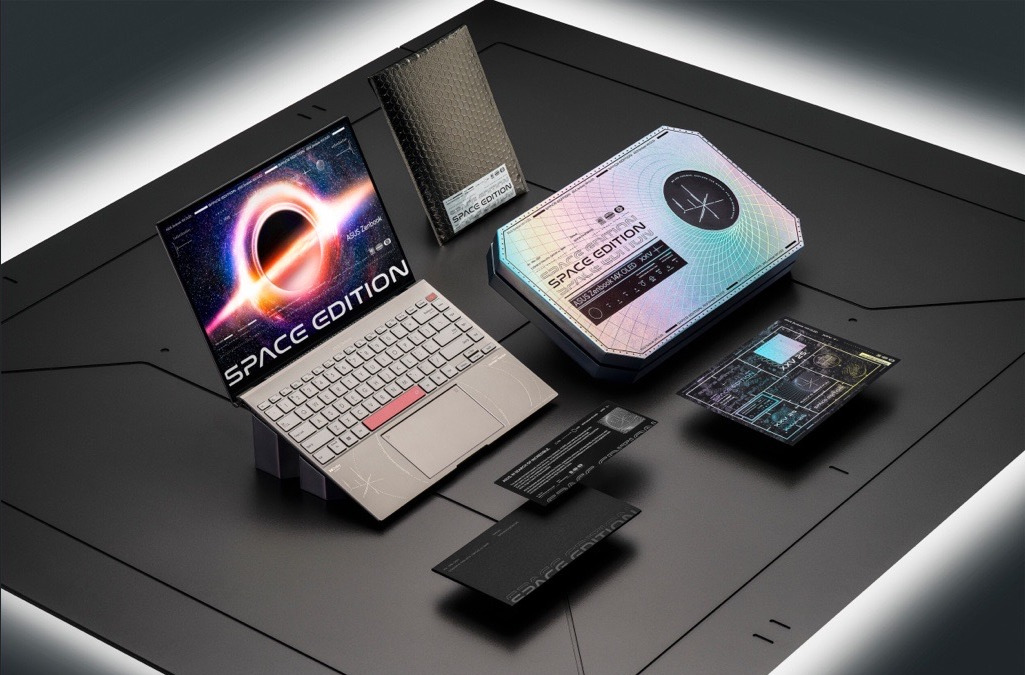
Issued with the Zenbook 14X OLED Space Edition is a special box with a ZenVision cutout to show the screen underneath the box cover. The box itself is wrapped in a futuristic silver packaging with ASUS’ modern space artstyle.
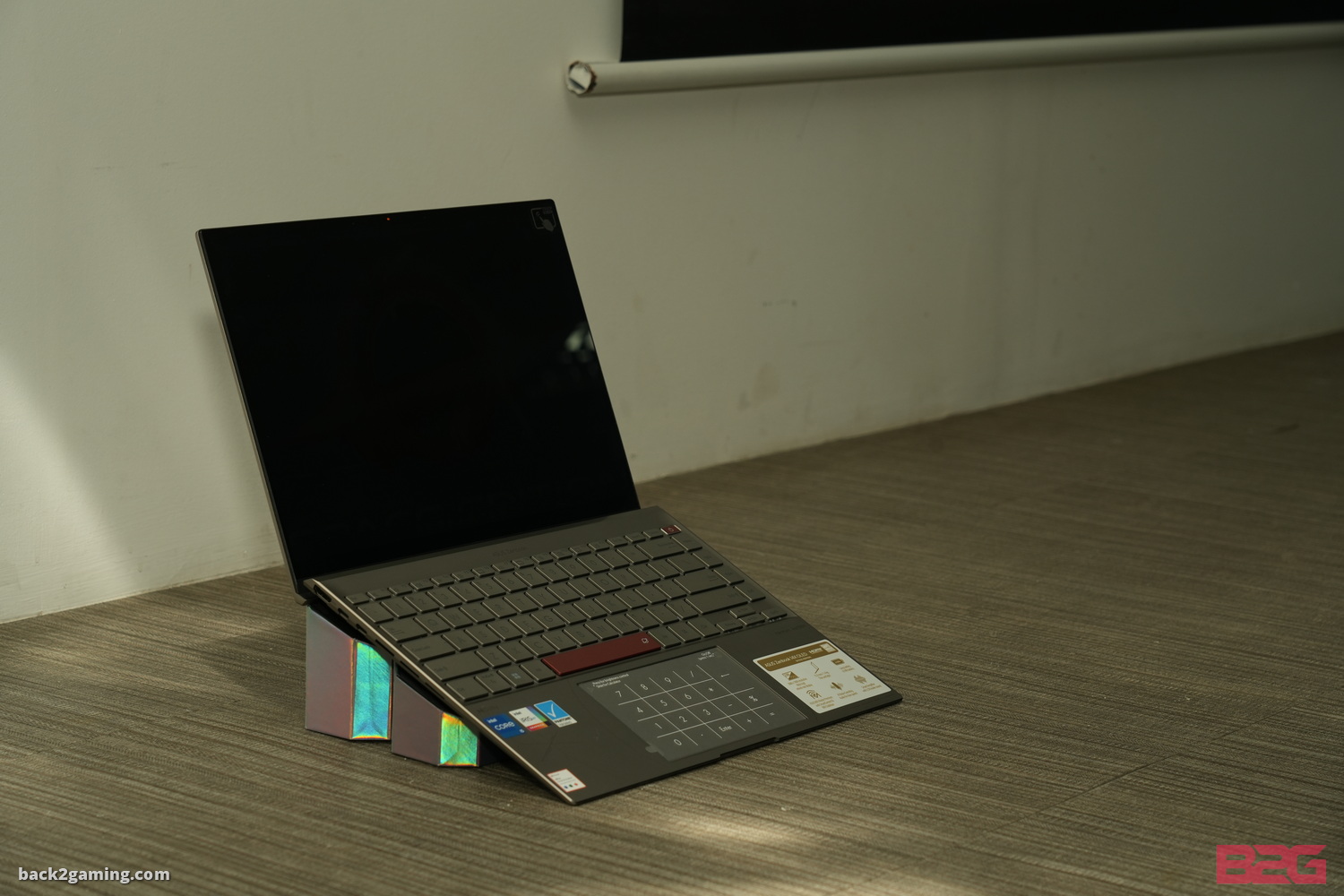
The accessory box exclusively available with the Zenbook 14X OLED Space Edition doubles as a laptop stand which elevates the laptop for users the prefer this position.
Display
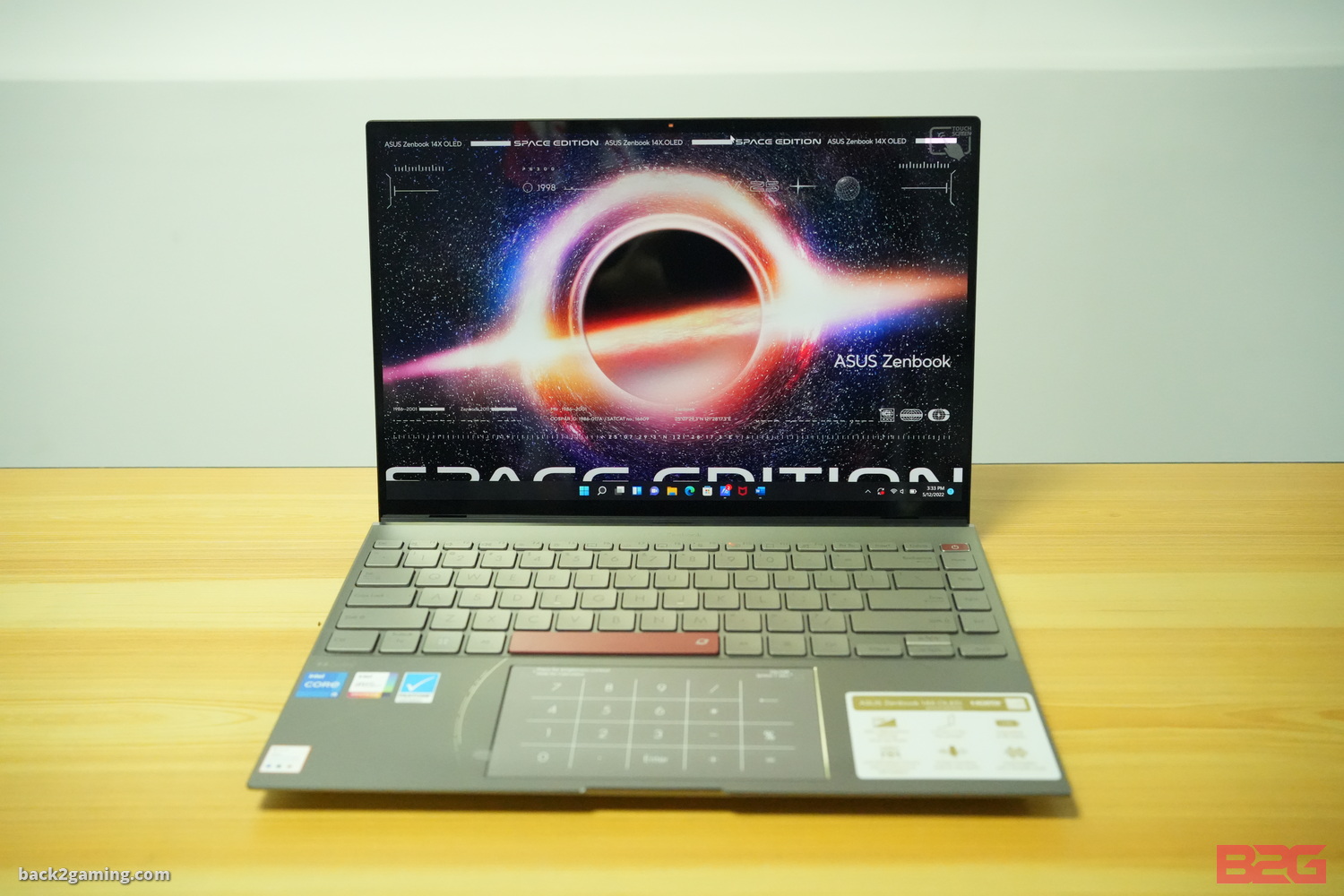
The entire release slate for ASUS’ 2022 Zenbook lineup will primarily consist of OLED displays. Across the board, we will have 2880×1800 16:10 resolution featuring 90hz displays. The main highlight here is the OLED panel which promises vibrant colors.
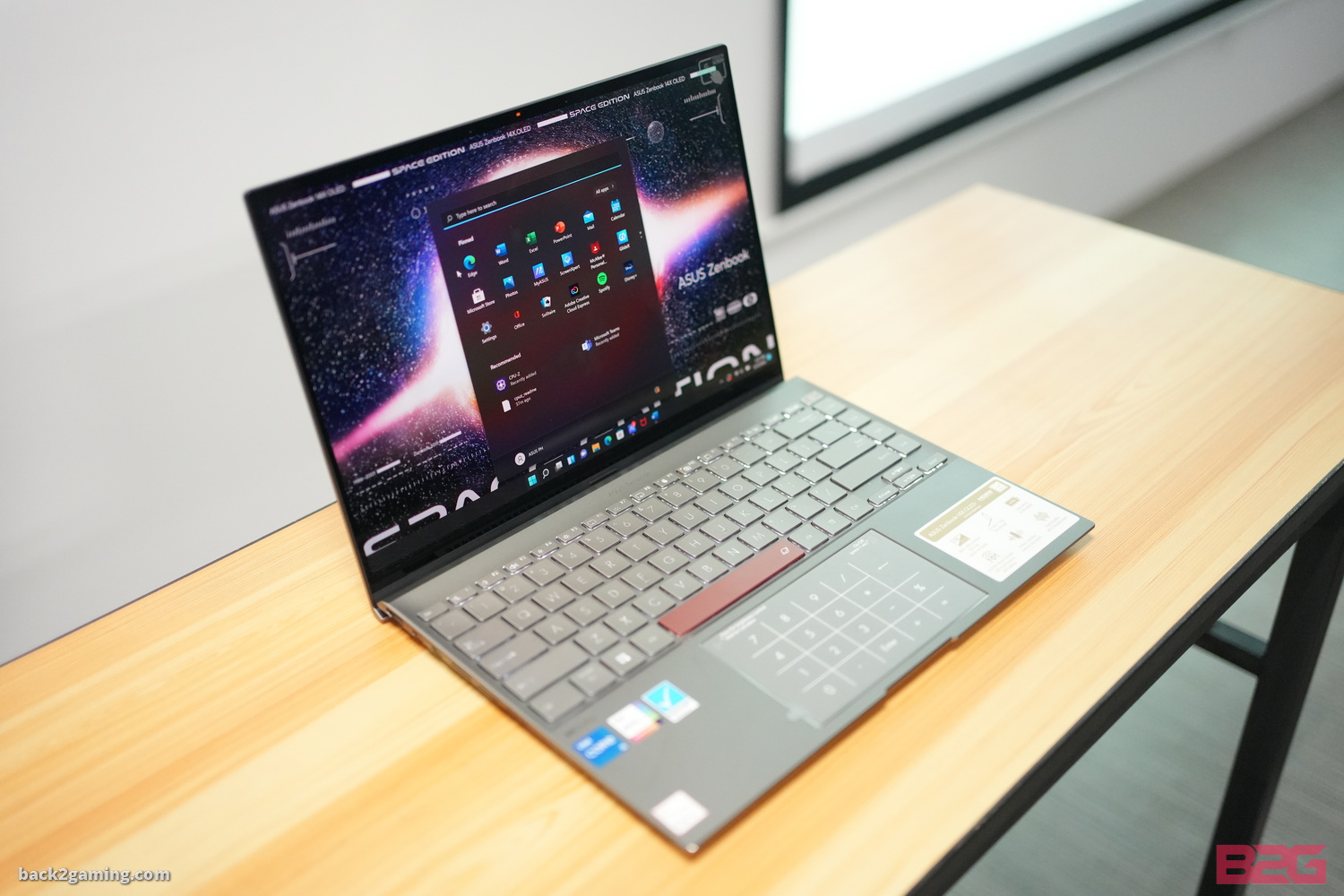
The OLED display is rated for 550 nits peak brightness and is certified DisplayHDR 500 and has a 100% DCI-P3 color gamut coverage. We’ll confirm all these numbers once we get to testing but ASUS goes to great lengths in their review guide to state the amount of color their displays can show even at lower brightness levels. This plays a key role in the fact that the Zenbook line is intended for work and will probably function as a media consumption device next to its primary work role for most users.
Typing and Trackpad
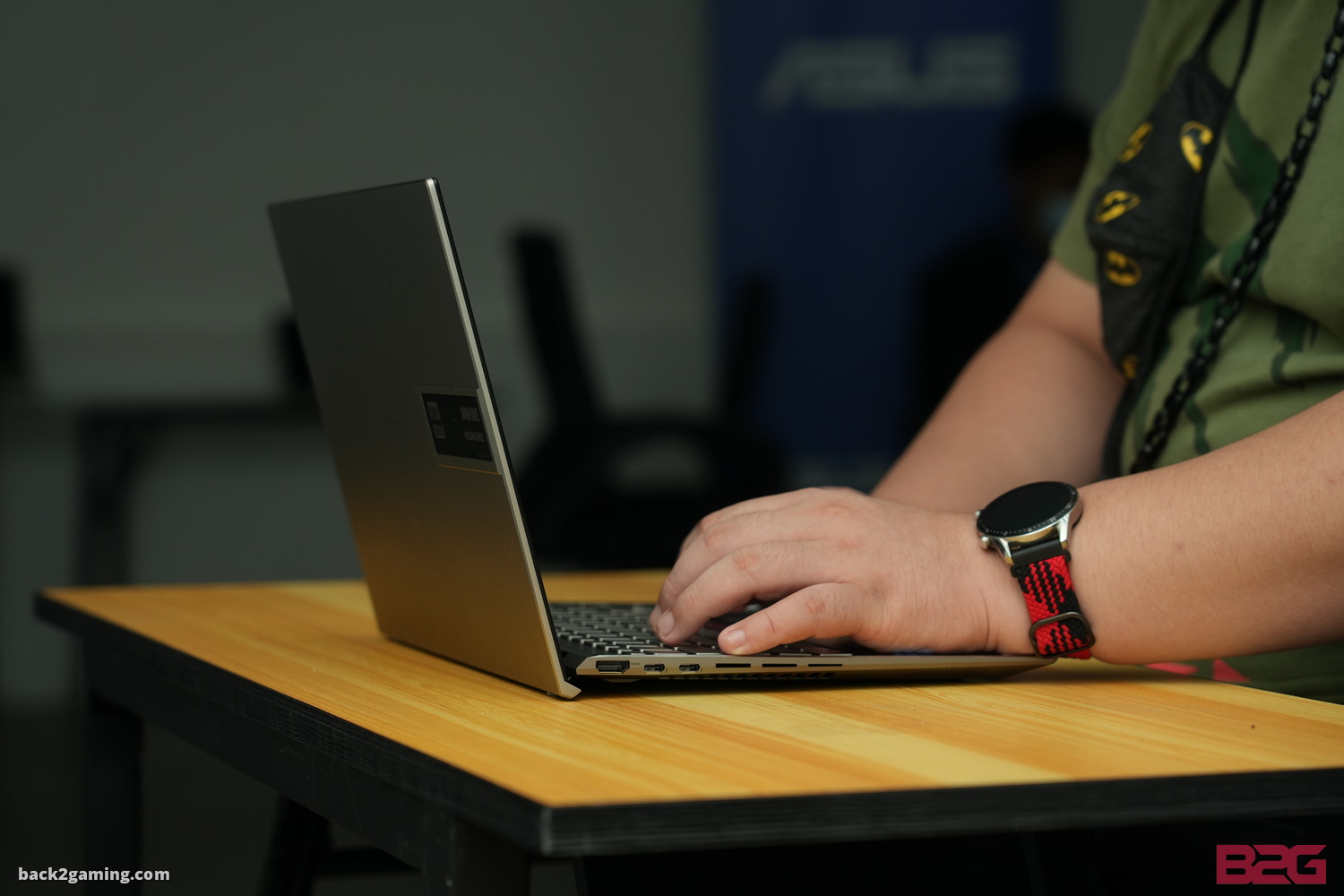
Retaining the ErgoLift design we’ve seen from previous Zenbooks, ASUS’ newer Zenbook including the 14X OLED Space Edition features a newer dished keys. Featuring a 19.05mm pitch (distance from center to next key), this little change hopes to improve typing comfort while offering better feel especially with the growing amount of mechanical keyboards with varying profiles in the market.
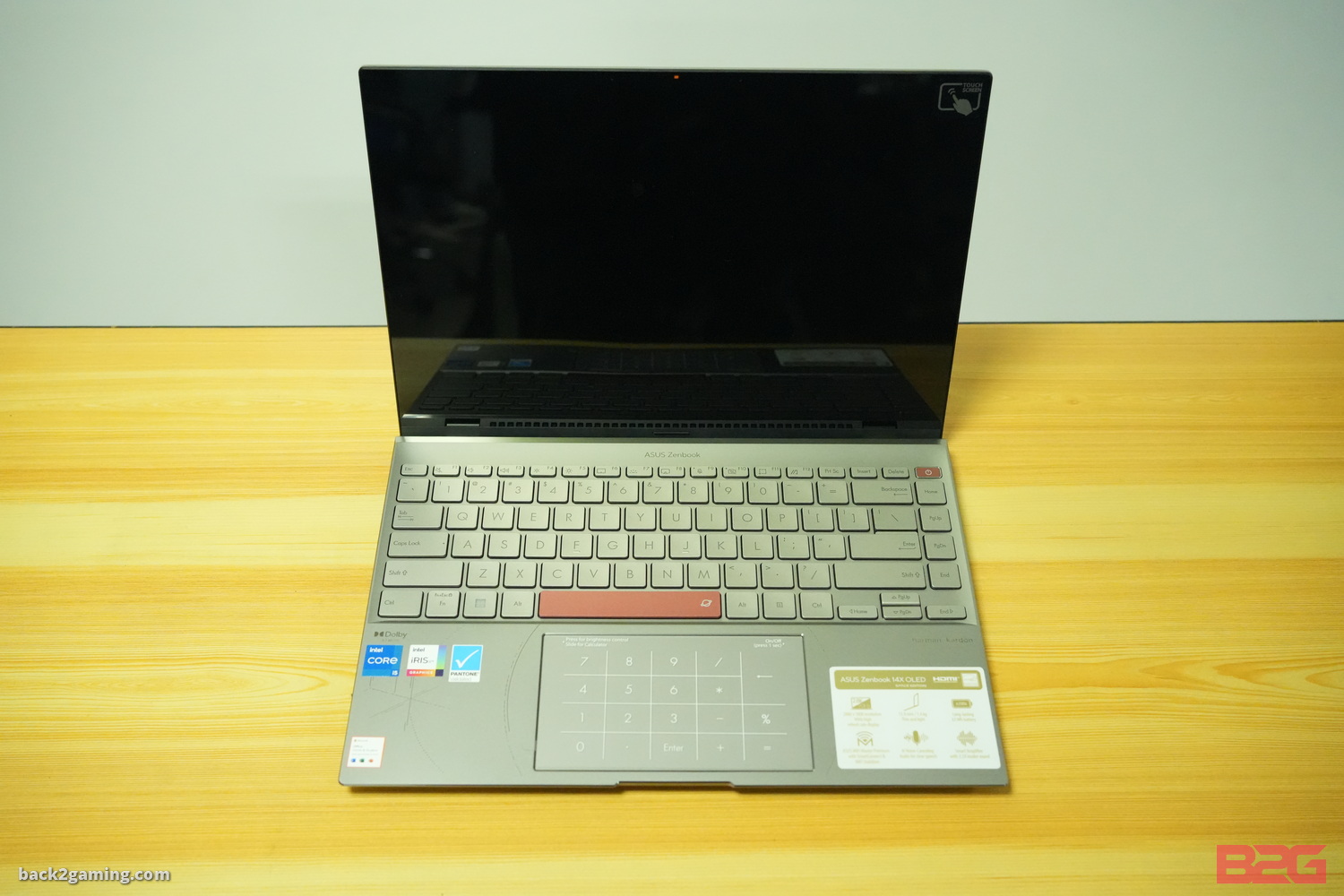
The dish tooling on the keys is approximately 0.2mm hopes to give more familiarity and distinctions between keys together with a more satisfying travel.
Worth pointing out is ASUS’ NumberPad 2.0 which puts the trackpad on double duty as a number pad but this time around, the trackpad can now make distinctions between taps for numbers versus clicks and drags. Users can disable and display the NumberPad 2.0 via the top track area. ASUS states that the trackpad features a more durable material to endure 10,000 swipes without discoloration.
The trackpad also supports gesture with 3- and 4-finger gestures for faster interaction with Windows.
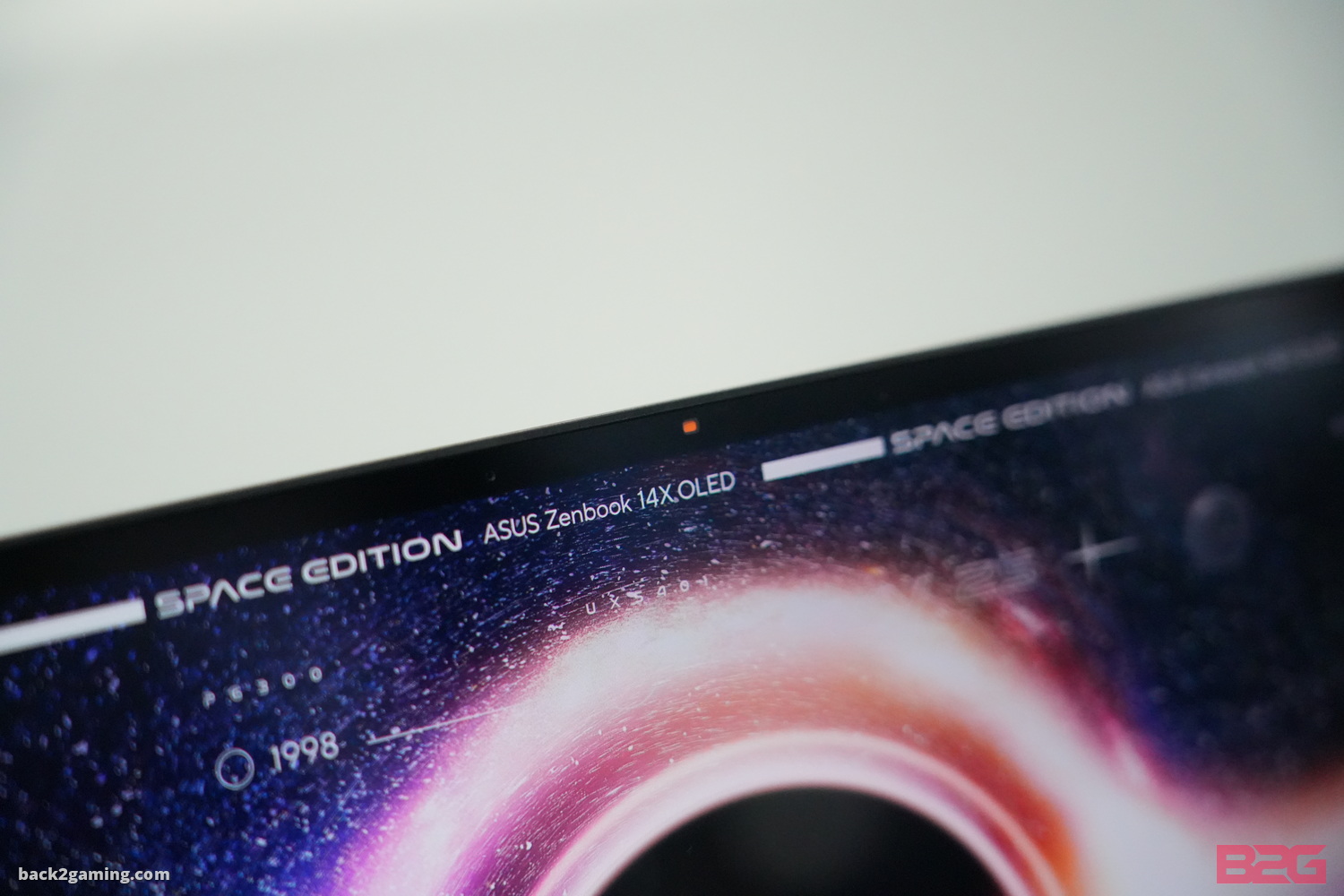

To support modern remote communication, ASUS has installed a physical camera shield accessible via keyboard shortcut. This will only work if the laptop is powered on but then again you can always close the lid if you need more privacy. When activating the camera shield, there’s an electronic activation sound which suggests there’s a motor inside activating the shield. This adds a point of failure though and something that still needs to be observed as we’re only starting to see more of these post-2020.
In terms of connectivity, the Zenbook 14X OLED Space Edition (along with the regular model) features dual Thunderbolt 4 Type-C on the right edge and USB3.2 Gen2 10Gbps Type-A on the left. ASUS retains a standard 3.5mm audio jack along with a full-sized HDMI port on both edges. There is a microSD card slot as well, potentially for increasing internal storage size as the standard configuration for this model will only be offered in 1TB capacities. At Gen4 speeds though, the primary storage will be snappy and anyone looking to do some 4K editing can scrub those 4K ProRes files with ease on the stock storage.
Specs-wise, the ASUS Zenbook 14X OLED Space Edition is offered with either an Intel Core i7-12700H or a Core i5-12500H CPU. This is coupled with up to 16GB of DDR5-4800 onboard memory and is powered by a 63Wh battery. The graphics duties are done thru the IGP Iris Xe graphics from Intel. At 45w TDP, I expect an approximate 6-7 hours of office work in this laptop. We’ll confirm that once we get our sample in as well as other performance numbers including Photoshop and Premiere Pro performance together with Office benchmarks.
Initial Thoughts and Impressions
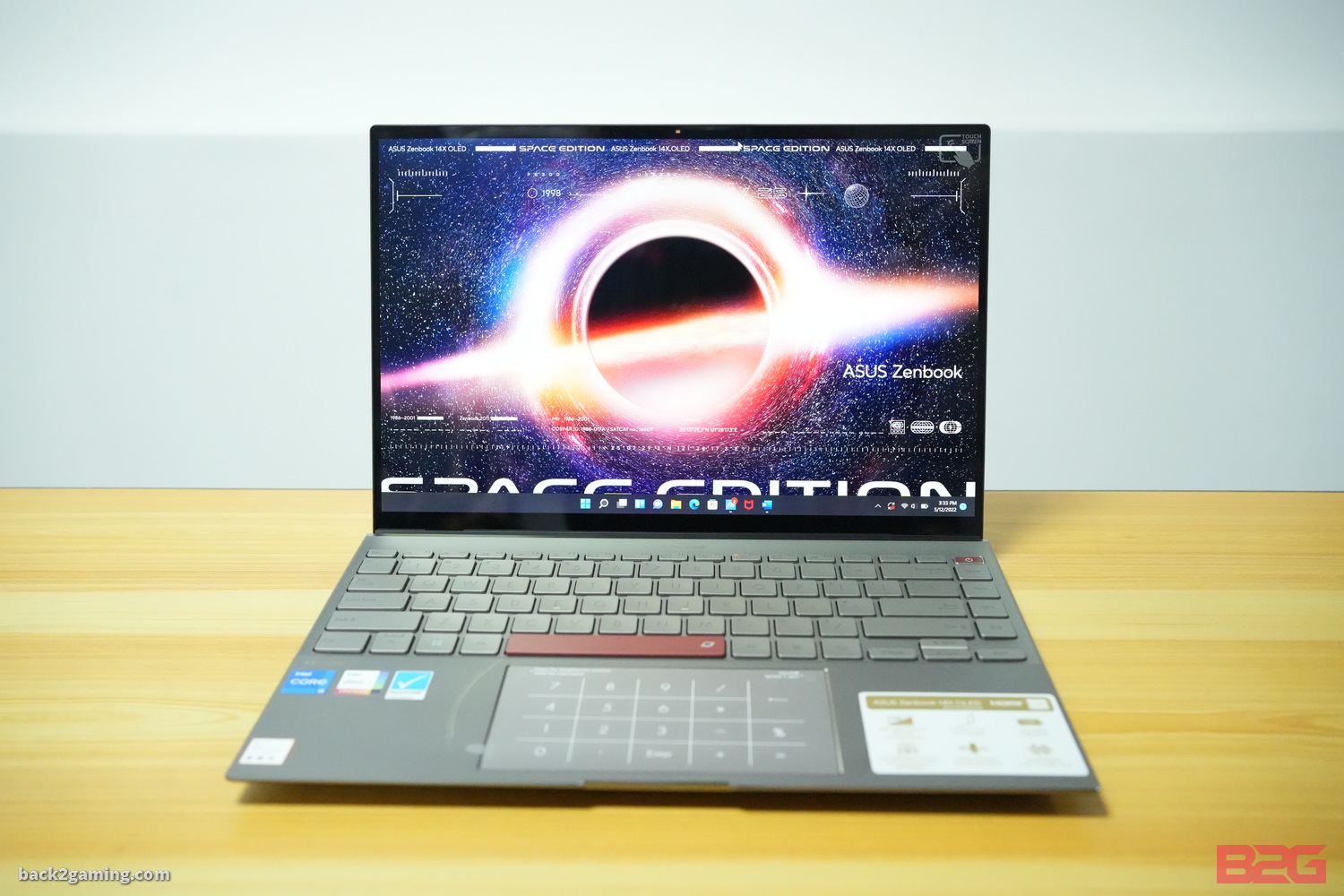
Much of what makes the Zenbook a Zenbook is its usability nuances. Its a laptop intended for discerning mobile workers while making itself distinct enough from a Macbook but maintains an air of affluence all to its own. Many laptop makers follow the same trope with Dell and Lenovo also closely following the same trend in terms of aesthetics. In terms of performance, many of the 12th-gen Intel laptops will rock the same specs so performance will be a moot point across the entire industry once we get saturated with these models.
The key difference maker here are features and quality-of-life improvements that the manufacturer adds onto their laptop. For the ASUS Zenbook 14X OLED Space Edition that comes twofold: an aesthetic deviation featuring its bold yet elegant space theme but also takes many of what makes the new Zenbook OLED lineup a very user-friendly line thanks to their rich array of functionalities for small things like the trackpad recognizing a number tap and a click actuation.
At 16.9mm thick and 1.4kg, its a very handy piece of gear and while not the lightest we’ve held, it is still very easy to travel around with. And speaking of traveling, the Zenbook 14X OLED Space Edition should last well into a day with a single charge on standard use although longer calls could drain it quicker with the speaker on and brightness bumped up a bit.
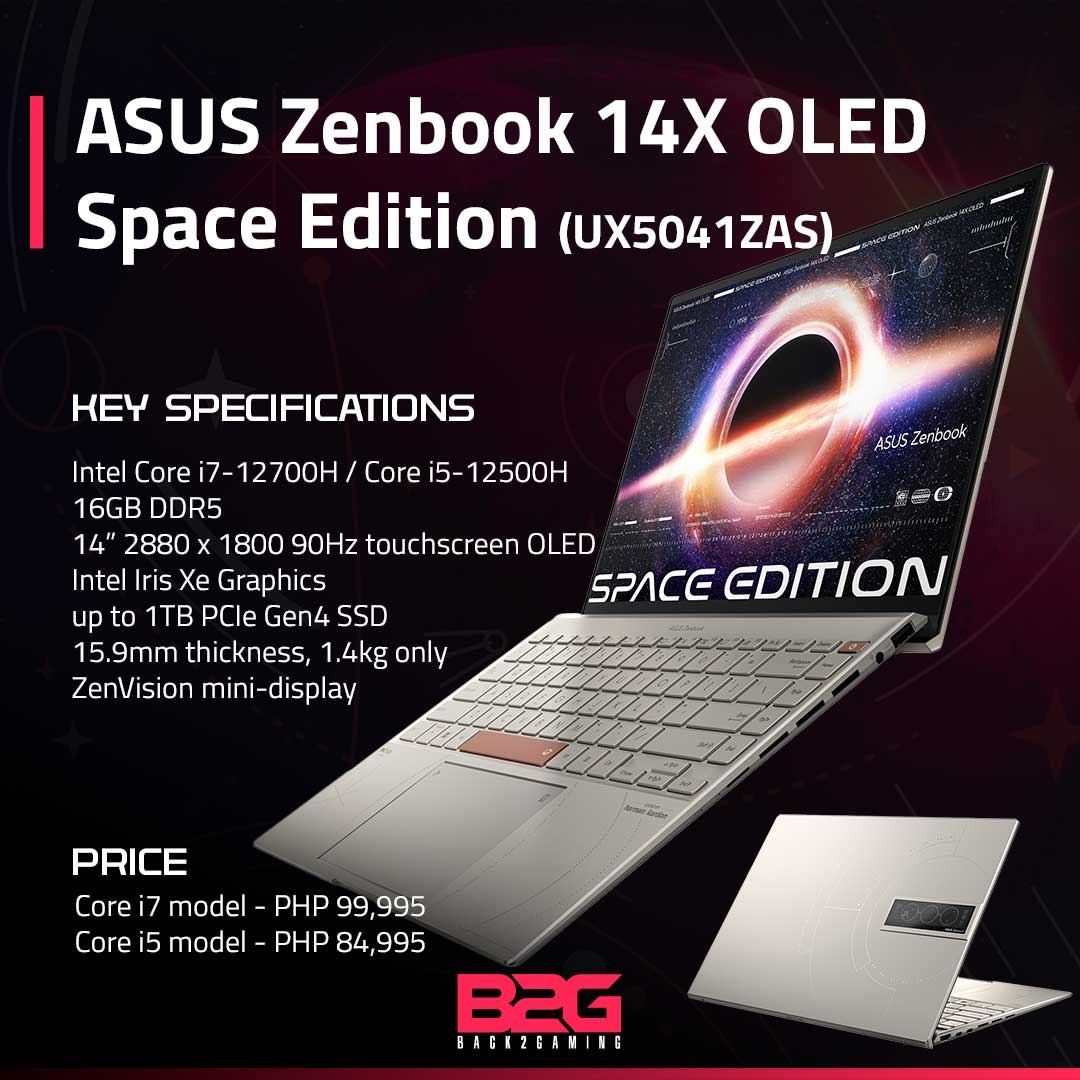
We’ll find out more in our full review but for now, the Zenbook 14X OLED Space Edition is certainly a niche release. Targeting those who want a statement piece rather than the standard, bourgeoisie take on the conventional premium work laptop. And while the Zenbook 14X standard release is a capable device, it does little to stand out next to the titanium glare of the Zenbook 14X OLED Space Edition.
Along with the Zenbook 14X OLED Space Edition, ASUS also gave us a glimpse of their entire line-up of Zenbook OLEDs for 2022. The Zenbook 14X OLED standard edition, Zenbook 14(non-X) OLED and Zenbook 14 Flip OLED all join the stable as the H1 2022 lineup for ASUS featuring 12th-gen Intel Core CPUs with one model featuring AMD (Zenbook 14 OLED UM3402YA).



